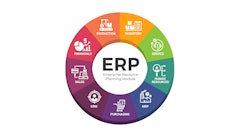
In today’s economic climate, volatility is constant, and businesses can no longer afford to go it alone. Procurement leaders are under growing pressure to do more with less: manage supplier risk, control inflation, ensure compliance, and maintain business continuity. As the demands on procurement expand, one trend is quickly gaining traction across both the private and public sectors: collaborative purchasing.
At its core, collaborative purchasing harnesses the aggregated buying power of multiple organizations to unlock savings and efficiencies that would be difficult—if not impossible—for a single company to achieve on their own. This model is often formalized through a group purchasing organization (GPO) or cooperative purchasing entity. GPOs and collectives serve as facilitators, bringing together members from either the private or public sector to combine their purchasing volumes, which enables them to negotiate better pricing, secure stronger contracts, and gain access to quality suppliers that they may not reach on their own.
For private sector businesses and public agencies alike, participating in a GPO means tapping into proven cost-savings solutions, streamlined procurement processes, and an expanded network of available goods and services. But it’s more than just group discounts. Done well, it creates speed to value, reduces internal burden, and enables teams to focus on strategic outcomes instead of tactical procurement events.
Procurement as an accelerator, not a drag
For too long, procurement has been viewed as a reactive cost center. But in a market shaped by global shocks and resource constraints, it’s becoming a strategic lever, especially when paired with the right infrastructure. Centralizing procurement through a group purchasing model not only drives double-digit savings in categories like office supplies and technology, but also dramatically reduces the time spent running RFPs, sourcing suppliers, and negotiating terms.
While technology has transformed many parts of the enterprise, the procurement function—and the GPO model—hasn’t evolved at the same pace.
That’s changing.
Procurement’s infrastructure moment
Think back to the early 2000s, when cloud computing first emerged. It wasn’t just about cost—it was about eliminating infrastructure complexity so businesses could move faster. We’re now seeing a similar shift in procurement. Rather than managing every step internally, companies are embracing collaborative models that offload heavy lifting—from contracting and pricing to supplier vetting and compliance.
This shift delivers more than savings. It brings consistency, simplifies decision-making, and creates space for teams to focus on high-impact needs—whether that’s strategic sourcing, supplier diversity, or ESG initiatives. Dubbed “procurement at speed,” it’s essential to staying competitive in a resource-constrained world.
Trust and channel: The foundation of collaborative models
Procurement is still a relationship-driven business. And while technology plays a critical role in surfacing data and improving workflows, it can’t replace the trust and alignment needed between buyer, supplier, and intermediary. One key to our success in the procurement space has been taking an active role in managing those relationships, ensuring suppliers see long-term value and that members know exactly what they’re getting.
In collaborative purchasing, trust isn’t a nice-to-have—it’s table stakes. Organizations are entrusting us with critical spend categories. It’s procurement’s job to deliver with consistency and clarity—not just cost reduction. That’s companies should prioritize simplicity in contracting, partner only with market-leading suppliers, and structure agreements to make it easy for members to adopt and scale across locations.
Procurement is evolving. Behavior must evolve with it.
The value of collaborative purchasing doesn’t end when the contract is signed. It’s only realized when the organization adapts—aligning internal processes to leverage the contract, drive compliance, and unlock value. That’s why it’s critical not to just hand off a contract and walk away. GPOs must work closely with both suppliers and members to activate usage, ensure alignment, and support measurable outcomes.
Too often, procurement teams believe their job is to run the RFP. But the real mandate is to drive value. GPOs aren’t replacing procurement teams— they’re helping them elevate their impact on their organization and focus on what truly drives growth and value.
Final thought: From efficiency to advantage
Collaborative purchasing is no longer just an efficiency play; it’s a competitive advantage. It enables organizations to do more with what they have, levels the playing field for mid-sized companies and public sector institutions, and repositions procurement as a driver of agility, insight, and impact.
Whether you’re running a multinational retail brand or a fast-growing school district, the challenge is the same: stretch every dollar without sacrificing quality or speed. And in today’s environment, the power of many is the smartest way to do just that.



















